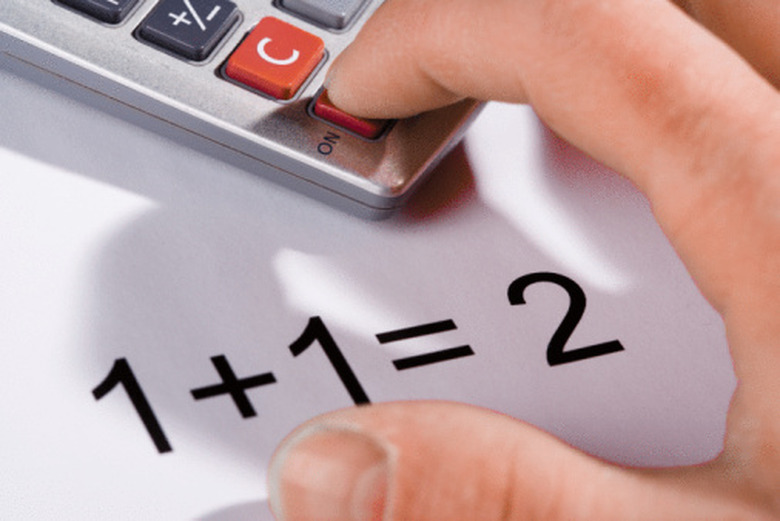How To Calculate Average Deviation From The Mean
Average deviation, combined with mean average, serves to help summarize a set of data. While mean average roughly gives the typical, or middle value, average deviation from the mean gives the typical spread, or variation in the data. College students will likely encounter this type of calculation in data analysis sections of laboratory reports or introductory statistics courses. Calculating the average deviation from the mean is easily done by hand with small data sets.
Finding Mean Average and Average Deviation from the Mean
Step 1
Calculate the mean average of your values first. Take the sum of all the values in your data set, then divide that by the total number of values. Example: for the values 2, 4 and 9, the sum is 15, which, divided by 3, gives a mean average of 5.
Step 2
To better organize your data, create a table with your values in the column labeled "values" and include your calculated mean average. The next column may be labeled "deviation from the mean."
Step 3
Calculate the deviation from the mean. The deviation must be calculated separately for each value in the data set. Take the difference between the mean average and each individual value, then take the absolute value of that number. Example: from the above data set, the deviation of the first value comes from subtracting 5 minus 2, resulting in a difference of 3. Since this is a positive number, the absolute value does not result in a sign change. Record each in deviation in your table.
Step 4
Take the mean average of all the deviations you calculated in the previous step. Take the sum of all the deviations (they should all be positive numbers because of the absolute value operation), then divide by the number of deviations you have added together. This result is the average deviation from the mean.
TL;DR (Too Long; Didn't Read)
With real data, as in a college laboratory report, you must carry through the significant figures of your measured data to your mean and average deviation calculations.
For larger data sets, or repetitive calculations, you can use or create programs to do the calculation. A basic spreadsheet program like Excel can be very useful, along with more specialized programs like MathCad.
Do not forget to apply the absolute value when determining the individual deviations. If you forget to do this, the average deviation will be (incorrectly) calculated as zero.
References
Cite This Article
MLA
Boyce, Joel. "How To Calculate Average Deviation From The Mean" sciencing.com, https://www.sciencing.com/calculate-average-deviation-mean-8094697/. 24 April 2017.
APA
Boyce, Joel. (2017, April 24). How To Calculate Average Deviation From The Mean. sciencing.com. Retrieved from https://www.sciencing.com/calculate-average-deviation-mean-8094697/
Chicago
Boyce, Joel. How To Calculate Average Deviation From The Mean last modified March 24, 2022. https://www.sciencing.com/calculate-average-deviation-mean-8094697/
